| |
|
I love this part
of Suffolk. The area west of Halesworth is one of the
most rural parts of East Anglia, and Chediston is one of
its least known villages. It is always a pleasure as the
days lengthen in early spring to get back in the saddle,
cycling around the parishes I had originally visited for
the Suffolk Churches site back in the 1990s, and which I
have enjoyed revisiting a number of times since.
As on the last occasion I came down the long lane from
Wissett, up over the ridge and then dipping down into
Chediston, the church tower appearing for the first time
on the rise ahead. The site suggests ancient origins.
Small houses bound the churchyard on all sides, and the
track to some of them actually goes through the
churchyard. There is an intensity to the church's
integration into its village, and so many rural English
churches must have had settings like this once.
The sparsely elaborated tower and cemented walls of the
nave and chancel make the church feel at first a bit
austere, especially if you've just come from one of the
pretty round-towered churches in this area. In fact, the
base of the tower is 13th century and the top was rebuilt
towards the end of the 15th century, but the unbuttressed
sides still seem more primitive than those of some of its
contemporaries. There is some evidence of Norman work in
the nave walls, but the overwhelming feeling inside is of
Suffolk's typically late medieval architecture. With one
important exception, the nave windows are set with clear,
19th century quarries, and so this part of the church is
full of light. The fine East Anglian font is in excellent
condition, its lions and woodwoses standing proudly. It
is very like the one over the ridge at Wissett, and they
may well have been carved by the same hand.
When the church was restored in the 1890s, the head of a
large St Christopher was revealed by the removal of some
plaster. Interestingly, one of the windows had been
punched through him before this exposure happened. This
is interesting, because the window was probably inserted
in the 15th century. This suggests, as elsewhere, that
wall paintings were not victims of the Reformation, but
were in many places covered over perhaps a century
earlier. The Victorian restoration here was roughly
contemporary with the lunatic restoration at nearby
Cookley, from which the beautiful pulpit here was
rescued. It has a grand stairway, with the date 1631 on
it. Mortlock observed that it was probably produced by
the same person as that at Rumburgh.
The nave has two striking furnishings, each of which is
worth a visit on its own. The first is the war memorial
window of 1949 by Margaret Edith Rope. It depicts St
George and St Felix, and if the figures seem a little
doll-like then that was her intention. They stand above
the arms of the RAF Bomber Squadron and the seal of the
Borough of Dunwich, for there is a persistent belief,
without any evidence, that Felix's see, Dummoc, had been
at Dunwich. The loveliest feature of the window is that
it contains rural Suffolk scenes in the background,
ploughing behind St George and harvesting behind St
Felix.
   
 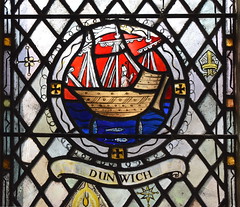 
East Anglia has a
number of surviving decalogue boards from the 17th
century, and Chediston's is probably the best. Moses and
Aaron flank the Ten Commandments from the Book of Exodus.
They both look very serious. Moses wears his horns of
light, while Aaron wears what might be taken as either
eucharistic vestments or masonic regalia. The sixth
commandment exhorts us to do no Murther, while
the seventh presents Adultery in a flowery
script, as if to subliminally suggest its potentially
attractive possibilities.
The chancel, is home to Chediston's remarkable early 17th
Century communion rails, acorns suspended above spikes
that look as if they might impale the fruits as they
fall. They are properly Laudian, designed to guard the
altar and keep out dogs. The Puritans hated this kind of
thing, perceiving that the manner in which they cordoned
off the sanctuary was an attempt by a movement within the
Church of England to take the nation back to Popery. They
are exactly the kind of thing that led to the English
Civil War, a strange thought.
Revisiting so many churches over several decades I find
something reassuring about finding how little has changed
in them when I know how much has changed in my own life.
There is a danger in this creating a kind of vicarious
nostalgia, for I am increasingly conscious of the gentle
ripples caused by the Church of England as it pushes
itself in new directions, reinventing itself for changing
communities, reborn or transformed or, at a small number
of churches, beginning to die.
What I felt revisiting Chediston was something steadfast,
a sense of confidence rooted, not so much in theology,
but in being a touchstone to the village and its people
down the long generations, past and present, and
intending to still be there for the future, too.
Simon Knott, April 2019
Follow these journeys as they happen at Last Of England
Twitter.
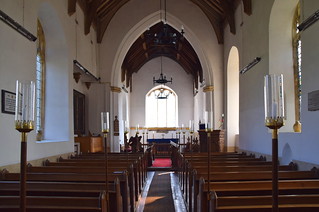 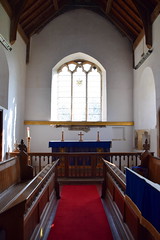 
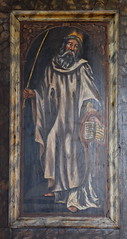  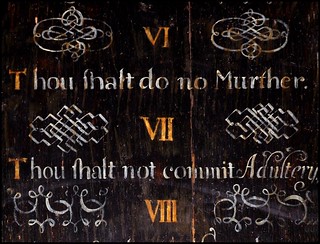
 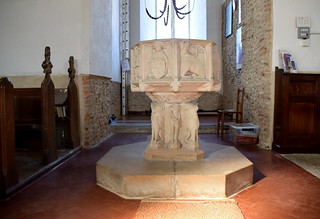

|
|
|

